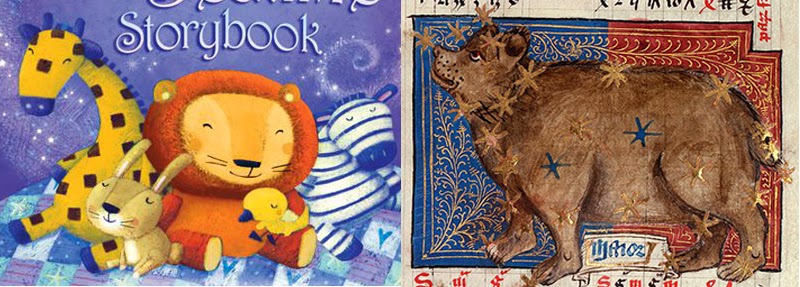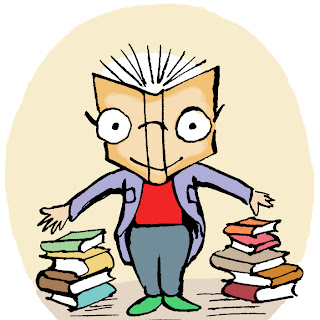Children's Books and Medieval IIlumination
@HAC_illustrated
As an illustrator and medieval historian (or so my university degree claims) I love all things pictorial and historic. So what better way to make my debut as an SCBWI illustration feature writer than to talk bout the brilliance of medieval illuminated manuscripts. From new contributor Heather Chapman
Some of you may be thinking, ‘A history lesson? Oh how dreary.’ But au contraire, mon cheri! If ever there was an object to make you feel inspired, to teach you a new technique or to lead you towards discovering your next character, illuminated manuscripts are it.
Our illustration ancestors may have been grumpy monks but above all they were marvellous storytellers who knew how to work colour, imagery and page layout to best entertain, educate and delight their audience. From scientific manuals and stellar explorations, to battling beasts and daring knights – including quite a few brave, giant snails in armour – illuminated manuscripts are a valuable resource for us picture book illustrators and writers.
For centuries, our illuminating ancestors have influenced the works of some of the best known and most loved book characters. Usborne's Illustrated Stories for Bedtime series with their gentle, sleepy feel beasts, resemble 14th century illuminations that explore the constellations. Bright yet soft colours are given energy with hints of gold flecks in the stars above and in the fur of the animals that shape those stars. There is a sense of movement using pen and ink or wispy brush strokes where fur ruffles and winds blow in the skies. In both cases, the animals are gentle and inviting because they are what we relate to.
The Wind in the Willows is perhaps the most well-known children’s story that, like many illuminated manuscripts, is built around anthropomorphic animal characters. As writers, we should explore the popular medieval qualities saturated throughout the story. The setting, in a pastoral version of England, combines with a mixture of mysticism, morality and adventure driving plot. As illustrators, we should examine the similarity between E. H. Shepard’s playful sketches and the eccentric animal characters that play on the pages of illuminated manuscripts. The 13th century seemed fond of anthropomorphic dogs, cats, rabbits and snails!
Even more bizarre than the characters of The Wind in the Willows are those from Alice’s Adventures in Wonderland. A tale of a girl named Alice who, after chasing a gentlemanly looking hare, falls down the rabbit hole into a world populated by peculiar anthropomorphic creatures. Sound familiar? A playful logic intertwines with the narrative structure and the illustrations by John Tenniel create a perfect reflection of the imagery we see in illuminated manuscript decorations. Humans with abnormally – and humorously - elongated body parts who interact with animated animals.
There are countless examples I could give but there is a word limit! I’ll end with one of my personal favourites that centres around a theme I wrote my dissertation on - Death. It’s not what you think. When the big bad plague was sweeping across medieval England, manuscripts soon shifted focus away from animals and towards the figure of Death as a welcome friend. The purpose was to make readers feel comfort in their final hours by portraying Death as a guide who would lead one on to the next space.
Duck, Death and the Tulip is a lovely modern day picture book by Wolf Erlbruch that draws on medieval manuscripts to deliver an important - and difficult - message. In this story, a duck strikes up an unlikely but touching friendship with Death who stays close by the duck to the end. I won’t ruin the elegance and beauty of the story by trying to summarise it here but as the pictures will show, medieval manuscripts can be a splendid resource for inspiration and entertainment.
Visit your local library for books on illuminated manuscripts or check out the British Library. If you aren’t able to visit in person, they have an astounding online catalogue.
Heather Chapman is a freelance illustrator and medieval enthusiast.
As an illustrator and medieval historian (or so my university degree claims) I love all things pictorial and historic. So what better way to make my debut as an SCBWI illustration feature writer than to talk bout the brilliance of medieval illuminated manuscripts. From new contributor Heather Chapman
Some of you may be thinking, ‘A history lesson? Oh how dreary.’ But au contraire, mon cheri! If ever there was an object to make you feel inspired, to teach you a new technique or to lead you towards discovering your next character, illuminated manuscripts are it.
Our illustration ancestors may have been grumpy monks but above all they were marvellous storytellers who knew how to work colour, imagery and page layout to best entertain, educate and delight their audience. From scientific manuals and stellar explorations, to battling beasts and daring knights – including quite a few brave, giant snails in armour – illuminated manuscripts are a valuable resource for us picture book illustrators and writers.
For centuries, our illuminating ancestors have influenced the works of some of the best known and most loved book characters. Usborne's Illustrated Stories for Bedtime series with their gentle, sleepy feel beasts, resemble 14th century illuminations that explore the constellations. Bright yet soft colours are given energy with hints of gold flecks in the stars above and in the fur of the animals that shape those stars. There is a sense of movement using pen and ink or wispy brush strokes where fur ruffles and winds blow in the skies. In both cases, the animals are gentle and inviting because they are what we relate to.
The Wind in the Willows is perhaps the most well-known children’s story that, like many illuminated manuscripts, is built around anthropomorphic animal characters. As writers, we should explore the popular medieval qualities saturated throughout the story. The setting, in a pastoral version of England, combines with a mixture of mysticism, morality and adventure driving plot. As illustrators, we should examine the similarity between E. H. Shepard’s playful sketches and the eccentric animal characters that play on the pages of illuminated manuscripts. The 13th century seemed fond of anthropomorphic dogs, cats, rabbits and snails!
Even more bizarre than the characters of The Wind in the Willows are those from Alice’s Adventures in Wonderland. A tale of a girl named Alice who, after chasing a gentlemanly looking hare, falls down the rabbit hole into a world populated by peculiar anthropomorphic creatures. Sound familiar? A playful logic intertwines with the narrative structure and the illustrations by John Tenniel create a perfect reflection of the imagery we see in illuminated manuscript decorations. Humans with abnormally – and humorously - elongated body parts who interact with animated animals.
 |
| Lion playing the violin in the Breviary of Renaud de Bar, France, 1302-1303 |
There are countless examples I could give but there is a word limit! I’ll end with one of my personal favourites that centres around a theme I wrote my dissertation on - Death. It’s not what you think. When the big bad plague was sweeping across medieval England, manuscripts soon shifted focus away from animals and towards the figure of Death as a welcome friend. The purpose was to make readers feel comfort in their final hours by portraying Death as a guide who would lead one on to the next space.
Duck, Death and the Tulip is a lovely modern day picture book by Wolf Erlbruch that draws on medieval manuscripts to deliver an important - and difficult - message. In this story, a duck strikes up an unlikely but touching friendship with Death who stays close by the duck to the end. I won’t ruin the elegance and beauty of the story by trying to summarise it here but as the pictures will show, medieval manuscripts can be a splendid resource for inspiration and entertainment.
Visit your local library for books on illuminated manuscripts or check out the British Library. If you aren’t able to visit in person, they have an astounding online catalogue.
Heather Chapman is a freelance illustrator and medieval enthusiast.















Thank you Heather for this - love the old and new connections too! Since seeing the Tres Riches Heures in Chantilly Chateau near where I used to live in France I've been a closet admirer of medieval illumination wishing I had a hundredth of the talent of those monks and all despite working in a totally different way. Great to know about the British Library online catalogue!
ReplyDeleteThank you Bridget! You must have a look at the catalogue - the images are almost as brilliant as the real thing. The monks also had quite a sense of humour writing little notes like 'looking forward to the drink after work' and border doodles that (rather rudely) depicted their frustrations. But those are not for children's eyes!!!
ReplyDeleteWhat super images - love the lion playing the violin!
ReplyDeleteThank you very much Heather - your enthusiasm is evident! I love seeing the medieval and modern side by side.
ReplyDelete